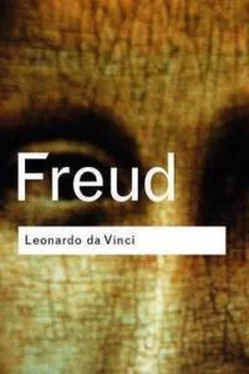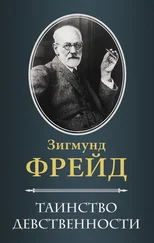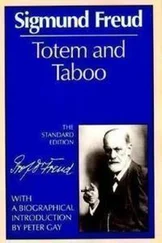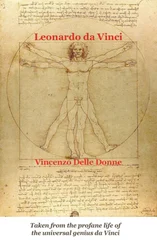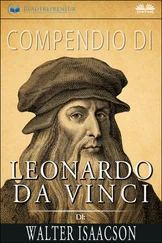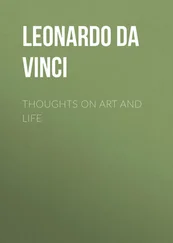By admitting that he entertained a special personal relation to the problem of flying since his childhood, Leonardo bears out what we must assume from our investigation of children of our times, namely, that his childhood investigation was directed to sexual matters. At least this one problem escaped the repression which has later estranged him from sexuality. From childhood until the age of perfect intellectual maturity this subject, slightly varied, continued to hold his interest, and it is quite possible that he was as little successful in his cherished art in the primary sexual sense as in his desires for mechanical matters, that both wishes were denied to him.
As a matter of fact the great Leonardo remained infantile in some ways throughout his whole life; it is said that all great men retain something of the infantile. As a grown up he still continued playing, which sometimes made him appear strange and incomprehensible to his contemporaries. When he constructed the most artistic mechanical toys for court festivities and receptions we are dissatisfied thereby because we dislike to see the master waste his power on such petty stuff. He himself did not seem averse to giving his time to such things. Vasari reports that he did similar things even when not urged to it by request: "There (in Rome) he made a doughy mass out of wax, and when it softened he formed thereof very delicate animals filled with air; when he blew into them they flew in the air, and when the air was exhausted they fell to the ground. For a peculiar lizard caught by the wine–grower of Belvedere Leonardo made wings from skin pulled off from other lizards, which he filled with mercury so that they moved and trembled when it walked; he then made for it eyes, a beard and horns, tamed it and put it in a little box and terrified all his friends with it." [72] Vasari, translated by Schorn, 1843.
Such playing often served him as an expression of serious thoughts: "He had often cleaned the intestines of a sheep so well that one could hold them in the hollow of the hand; he brought them into a big room, and attached them to a blacksmith's bellows which he kept in an adjacent room, he then blew them up until they filled up the whole room so that everybody had to crowd into a corner. In this manner he showed how they gradually became transparent and filled up with air, and as they were at first limited to very little space and gradually became more and more extended in the big room, he compared them to a genius." [73] Ebenda, p. 39.
His fables and riddles evince the same playful pleasure in harmless concealment and artistic investment, the riddles were put into the form of prophecies; almost all are rich in ideas and to a remarkable degree devoid of wit.
The plays and jumps which Leonardo allowed his phantasy have in some cases quite misled his biographers who misunderstood this part of his nature. In Leonardo's Milanese manuscripts one finds, for example, outlines of letters to the "Diodario of Sorio (Syria), viceroy of the holy Sultan of Babylon," in which Leonardo presents himself as an engineer sent to these regions of the Orient in order to construct some works. In these letters he defends himself against the reproach of laziness, he furnishes geographical descriptions of cities and mountains, and finally discusses a big elementary event which occurred while he was there. [74] Concerning these letters and the combinations connected with them see Müntz, l. c., p. 82; for the wording of the same and for the notices connected with them see Herzfeld, l. c., p. 223.
In 1881, J. P. Richter had endeavored to prove from these documents that Leonardo made these traveler's observations when he really was in the service of the Sultan of Egypt, and that while in the Orient he embraced the Mohammedan religion. This sojourn in the Orient should have taken place in the time of 1483, that is, before he removed to the court of the Duke of Milan. However, it was not difficult for other authors to recognize the illustrations of this supposed journey to the Orient as what they really were, namely, phantastic productions of the youthful artist which he created for his own amusement, and in which he probably brought to expression his wishes to see the world and experience adventures.
A phantastic formation is probably also the "Academia Vinciana," the acceptance of which is due to the existence of five or six most clever and intricate emblems with the inscription of the Academy. Vasari mentions these drawings but not the Academy. [75] Besides, he lost some time in that he even made a drawing of a braided cord in which one could follow the thread from one end to the other, until it formed a perfectly circular figure; a very difficult and beautiful drawing of this kind is engraved on copper, in the center of it one can read the words: "Leonardus Vinci Academia" (p. 8).
Müntz who placed such ornament on the cover of his big work on Leonardo belongs to the few who believe in the reality of an "Academia Vinciana."
It is probable that this impulse to play disappeared in Leonardo's maturer years, that it became discharged in the investigating activity which signified the highest development of his personality. But the fact that it continued so long may teach us how slowly one tears himself away from his infantilism after having enjoyed in his childhood supreme erotic happiness which is later unattainable.
It would be futile to delude ourselves that at present, readers find every pathography unsavory. This attitude is excused with the reproach that from a pathographic elaboration of a great man one never obtains an understanding of his importance and his attainments, that it is therefore useless mischief to study in him things which could just as well be found in the first comer. However, this criticism is so clearly unjust that it can only be grasped when viewed as a pretext and a disguise for something. As a matter of fact pathography does not aim at making comprehensible the attainments of the great man; no one should really be blamed for not doing something which one never promised. The real motives for the opposition are quite different. One finds them when one bears in mind that biographers are fixed on their heroes in quite a peculiar manner. Frequently they take the hero as the object of study because, for reasons of their personal emotional life, they bear him a special affection from the very outset. They then devote themselves to a work of idealization which strives to enroll the great men among their infantile models, and to revive through him, as it were, the infantile conception of the father. For the sake of this wish they wipe out the individual features in his physiognomy, they rub out the traces of his life's struggle with inner and outer resistances, and do not tolerate in him anything of human weakness or imperfection; they then give us a cold, strange, ideal form instead of the man to whom we could feel distantly related. It is to be regretted that they do this, for they thereby sacrifice the truth to an illusion, and for the sake of their infantile phantasies they let slip the opportunity to penetrate into the most attractive secrets of human nature. [76] This criticism holds quite generally and is not aimed at Leonardo's biographers in particular.
Leonardo himself, judging from his love for the truth and his inquisitiveness, would have interposed no objections to the effort of discovering the determinations of his psychic and intellectual development from the trivial peculiarities and riddles of his nature. We respect him by learning from him. It does no injury to his greatness to study the sacrifices which his development from the child must have entailed, and to the compile factors which have stamped on his person the tragic feature of failure.
Читать дальше
